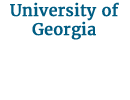Marine snow is made up of large particles of detritus – it is the “dust bunnies” of the ocean. Researchers working within this theme investigate how marine snow sinks to the seafloor and how it gets resuspended back into the water once it hits the sediment- they follow the pathway of oil into marine snow near the surface of the ocean, down to the seafloor and back into the water above the seafloor.
Our researchers use special funnel shaped traps that are deployed deep in the ocean (at 1400m) to collect sinking marine snow particles. This sinking marine snow can carry oil or oil residues with it- forming marine oil snow. They use the marine snow collected in their sediment traps to analyze how much and what type of material settles to the bottom. They also use underwater cameras to measure the amount of marine snow sinking through the ocean.
This theme aims to address components of the following ECOGIG research areas:
Quantify how hydrocarbons (oil & gas) are incorporated into marine oil snow and evaluate its formation, dynamics and fate in the Gulf by:
1. Assessing the importance of oil removal via formation of rapidly sinking oil-rich particles;
2. Determining the roles of phytoplankton, minerals and microbes in forming marine oil snow;
3. Measuriing the role of physical transport in delivering marine oil snow to the seafloor and back into the benthic layer through resuspension; and
4. Determining the fate of marine oil snow in the water column and in the benthos and evaluating the impact of marine oil snow on corals.


















 back to top
back to top